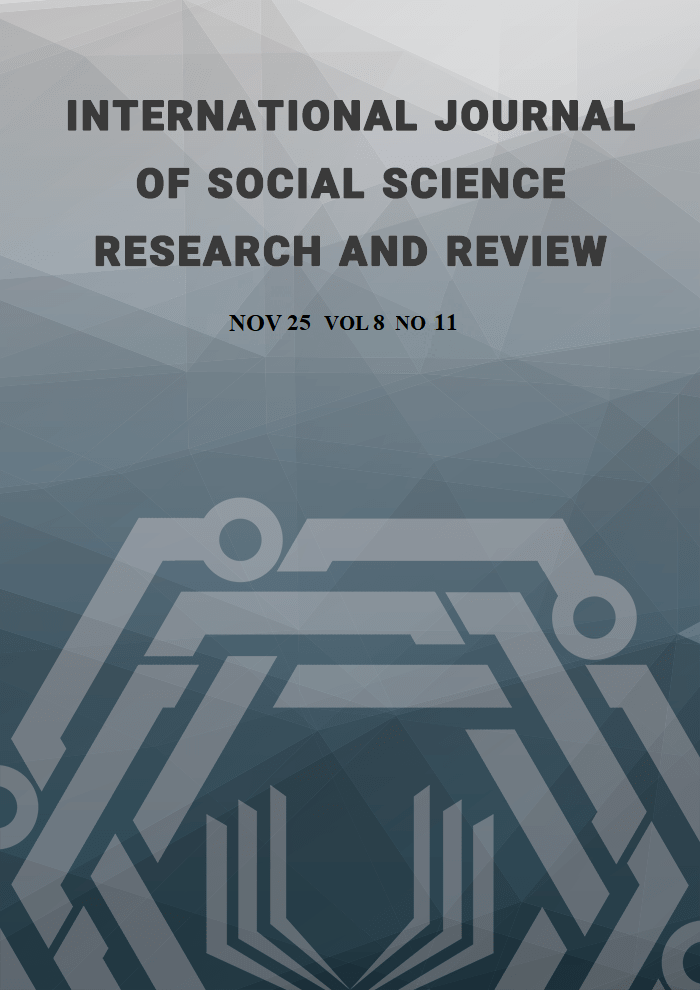Understanding the Perception of Kirana Store Owners Towards Online Grocery Platforms
Abstract
The rapid expansion of online grocery platforms such as Zepto, Blinkit, and Swiggy Instamart has sparked many debates about their impact on traditional kirana stores, which have been an integral part of the Indian community. The present study aims to investigate the perceptions of kirana store owners and how their perception towards the growing presence of online platforms. A survey was conducted with 25 kirana store owners in Pune, Maharashtra, using structured questionnaires that combined both quantitative and qualitative elements. The findings revealed that many kirana store owners reported a noticeable decline in customer footfall and sales, with customers increasingly choosing the convenience of online ordering. To adapt, many shopkeepers introduced digital payment systems, home delivery, and phone or WhatsApp-based ordering, while a few experimented with their own apps. These findings suggest that although online platforms challenge kirana stores, they also push them towards modernisation and digital adoption. The implications extend to retail associations, and technology providers, highlighting the need for targeted support that ensures traditional and digital retail models coexist in a way that sustains small businesses while meeting evolving consumer needs.
References
Bora, G. (2025, June 26). Reinventing Retail: How local kirana stores are adapting to India's quick commerce boom. The Economic Times. Retrieved July 7, 2025, from https://economictimes.indiatimes.com/small-biz/sme-sector/reinventing-retail-how-local-kirana-stores-are-adapting-to-indias-quick-commerce-boom/articleshow/122082309.cm.
Business Standard. (2022, July 19). Swiggy Instamart eyes 100 million transacting users in next 4-5 years. Business Standard. Retrieved July 7, 2025, from https://www.business-standard.com/article/companies/swiggy-instamart-eyes-100-million-transacting-users-in-next-4-5-years-122101901213_1.html.
Cmartix Tech Blog. (2022, July 14). Top 10 Reasons Behind the Fast Growth of Quick Commerce. CMARIX Tech Blog. Retrieved July 7, 2025, from https://www.cmarix.com/blog/reasons-behind-the-fast-growth-of-quick-commerce.
Diwan. (2024). Impact of E-commerce on Small and Medium Enterprises: A Case Study of Developing Countries. Universal Research Reports. Retrieved July 7, 2025, from https://urr.shodhsagar.com/index.php/j/article/view/1317.
India Today. (2021, December 20). Blinkit, earlier Grofers, temporarily closes down its services in areas where it cannot deliver in 10 minutes. India Today. https://www.indiatoday.in/technology/news/story/blinkit-earlier-grofers-temporarily-closes-down-its-services-in-areas-where-it-cannot-deliver-in-10-minutes-1889971-2021-12-20.
Malhotra, V. (2022, February 18). Impact of the 10-Minute Grocery Delivery Incentive on Consumer Habits, Demand and Road Accidents. Social Science Research Network. Retrieved July 7, 2025, from https://papers.ssrn.com/sol3/papers.cfm?abstract_id=4161893.
Satyapal, S. P., & Yadav, S. B. (2023). Q - Commerce: The Emerging Trend during the Covid-19 Pandemic Phases. Vol. 36(No. 1(III)). Retrieved July 7, 2025, from https://www.ckthakurcollege.net/maindesign/assets/pdf_files/uploaded_documents/90._3.4.3_2023_S_B_Yadav_Q_-_COMMERCE_THE_EMERGING_TREND_DURING_THE_COVID-19_PANDEMIC_PHASES.pdf.
Sharma, A. (2024, September 1). Blinkit’s Strategies Behind 46% Market Share in India’s Quick Commerce. LinkedIn. Retrieved July 7, 2025, from https://www.linkedin.com/pulse/blinkits-strategies-behind-46-market-share-indias-quick-anjali-sharma-pezaf.
Singh, V., & Agarwal, S. (2025, March). Evaluating the Impact of Quick Commerce on Traditional Grocery Retailers: Challenges, Adaptation, and Future Trajectories. International Journal of Research Publication and Reviews, 6(3), 6424–6427. International Journal of Research Publication and Reviews (IJRPR). Retrieved July 7, 2025, from https://ijrpr.com/uploads/V6ISSUE3/IJRPR40545.pdf.
Copyright (c) 2025 Arjun Sangram Patil

This work is licensed under a Creative Commons Attribution-NonCommercial-NoDerivatives 4.0 International License.
Copyright for this article is retained by the author(s), with first publication rights granted to the journal. This is an open-access article distributed under the terms and conditions of the Creative Commons Attribution license (https://creativecommons.org/licenses/by-nc-nd/4.0/).





